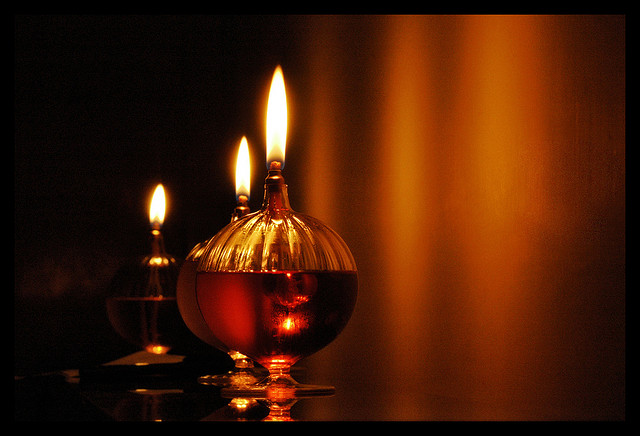Subham Karoti Kalyanam, Arogyam Dhana Sampadah,
Shatru Buddhi Vinashaya Deepa Jyotir Namostute.
‘ I salute the one who is the lamplight that brings auspiciousness; prosperity, good health, abundance of wealth, and the destruction of the intellect’s enemy– Kama(lust), krodha(anger), lobha(greed), moha(attachment), mada(pride) and matsarya(jealousy)’.
As Navaratri, Diwali, Karthikai deepam(festival of lights) are fast approaching, let us learn a little more about the history of lamps and the significance of lighting them in our culture. The word lamp is derived from ” lampas” a Greek word, which means torch.
It was around 70,000 BC that the very first lamp was invented, where the container was nothing more than a hollow rock or shell found naturally and the fuel for the lamp was animal fat. Since then lamps have transformed significantly over the centuries from a humble, naturally found object to modern day’s sophisticated electric lamps.
Earlier lamps were made from clay, metal and even blown glass (which apparently broke easily as it could not withstand the heat of the flame). Manmade lamp’s shape, size, and design have transformed from a simple saucer with a free-floating wick to a saucer with a nozzle to hold the wick in place to an extravagant ornamental piece of art symbolizing the status of the owner in the society.
In most cultures light is considered sacred and primary source of energy and it is no different in Hindu culture. Here light symbolises knowledge and the act of lighting the lamp is considered as warding off or dispelling ignorance and welcoming knowledge into one’s life. In most Indian homes lighting diyas in front of the god’s idol is a daily ritual and invariably all auspicious functions, religious as well as social events, begin with the lighting of the lamp.
“Diwali” or Deepavali an important festival in India which signifies the victory of good over evil, marks important historical events and stories, for Hindus, Jains, Sikhs and Buddhists alike. It is the time for celebration for one and all. All homes are decorated with diyas and the festival is celebrated with pomp and show.
Not only do these lamps illuminate the homes and invigorate the spirituality among people, they also act as germicides. It is believed that the spread of bacteria and insects is curtailed by the lighting of lamps during the Diwali time when the humid weather is prone to bring illness.
Anyways, I guess the beauty and joy that a lit lamp brings during the festival is more than enough reason for people to continue to use them for years to come. May this Diwali bring peace, prosperity and joy to one and all.
– Senthamaraiselvi, Teacher, Sri Seshaas International Public School
Latest posts by Team NumberNagar® (see all)
- What is the most valuable gift you have given your child? - 18 September 2020
- What’s in a name? - 15 May 2020
- The Anatomy of a Summer Assignment - 18 October 2019
- The Pressing Need for Child-Centric Learning - 1 March 2019
- Secrets to Prosperity - 18 February 2018

